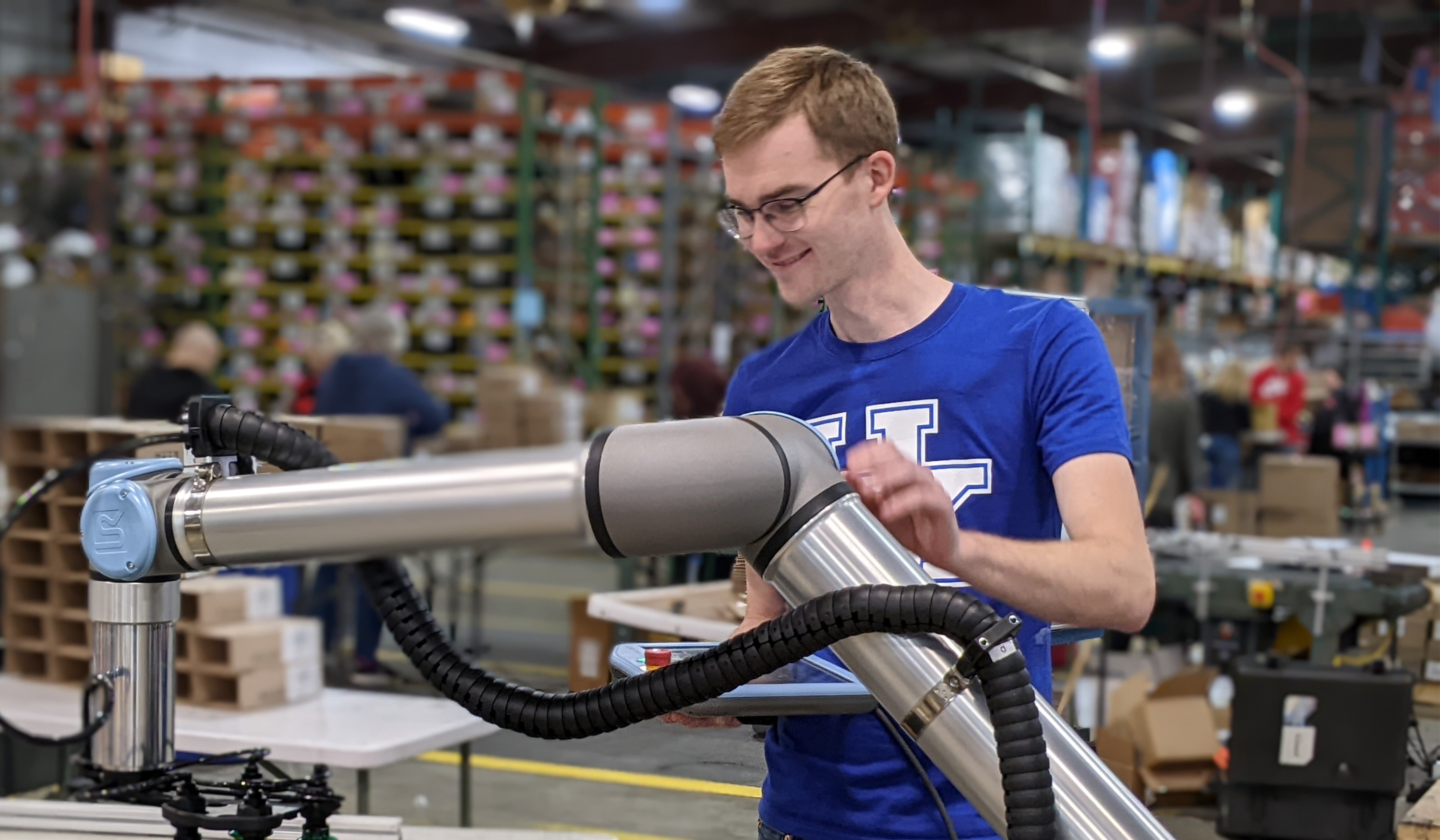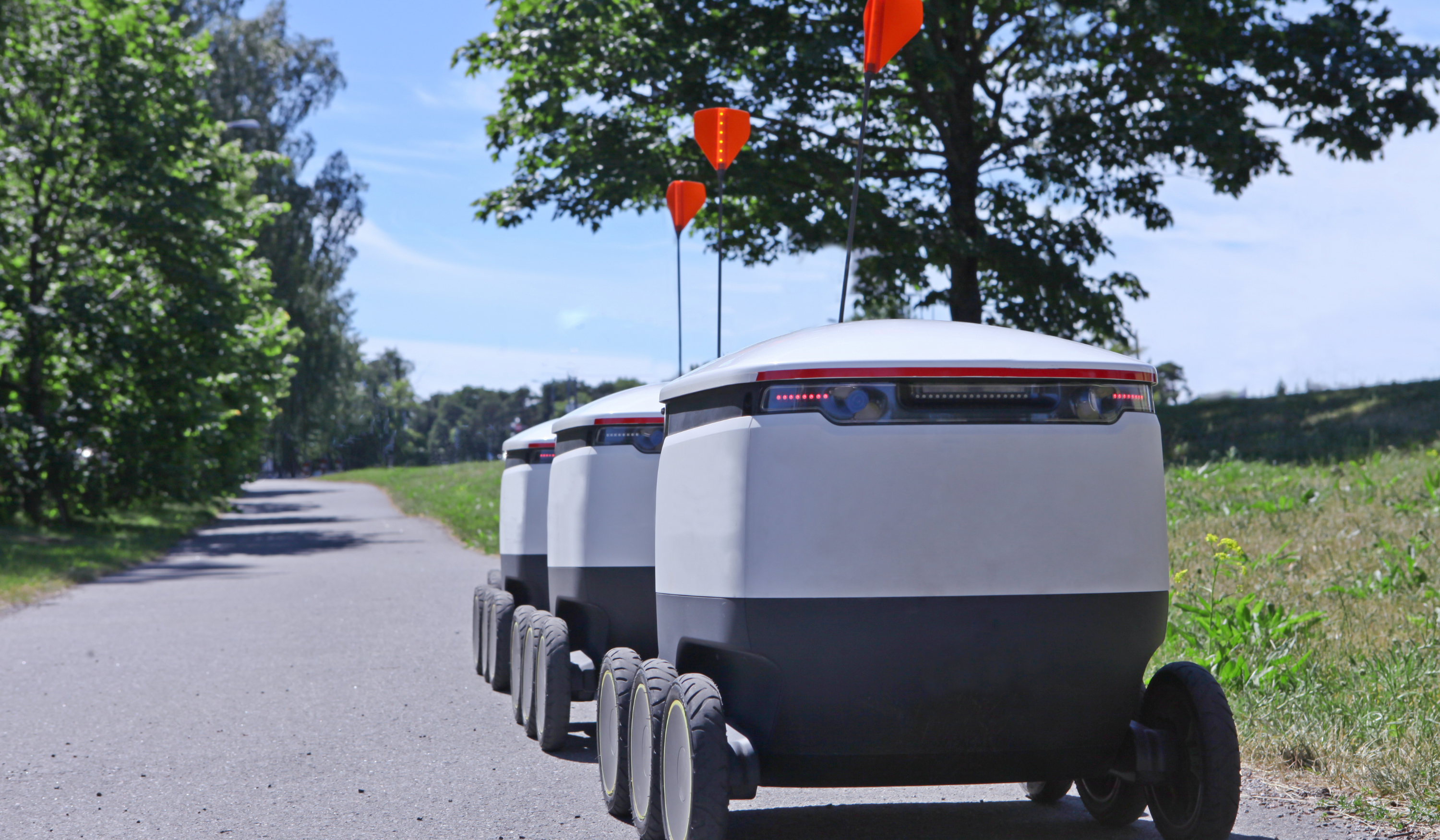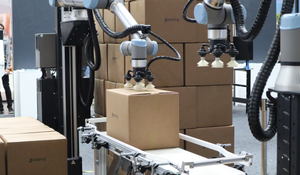How We Shrunk Our Delivery Time from 2 Weeks to 2 Days

Posted on Nov 28, 2017 11:17 AM. 6 min read time
Robotiq is a fast growing company. As you might have noticed, our social medias are filled with job applications. That also means that our sales are ramping up quite fast and that we need to adapt our product output. That being said, we recently ran a lean manufacturing project that reduced our delivery time from 2 weeks to 2 days, all of this with constant increase in our sales and product output. Here is some insight on the process to get there.
The square wheel paradox
As our production rate was increasing, we would always be worried to fail in fulfilling the promises we had made to our customers. The production manager would always wonder if he’d be able to produce enough products to meet the customer demands in time. We didn’t have any KPI’s or indicators to gauge if we were producing enough or too much or if we were making the right product. The production line was doing its best to generate as much as possible and to meet the demand. And trust me, we were able to deliver.
Even though we were able to deliver, we were offering a 2-week delivery time. Why so? Good question. The production engineering department started to analyse our order input, our product output, the time that we were spending producing a product, the cadence at which products were ordered, and we realized we could actually deliver within 48 hours if we changed things and made the company leaner.
What the engineering department realized is that there was waste everywhere in the production line, but also in the administration process: wait time here and there, useless process, useless approbations, manual tooling, etc. So even though we were having an increase in sales and that everyone was going around chasing their tail, we decided to start our first LEAN manufacturing project.
How to make things 7 times faster
To make a long story short, we formed a committee, with one or two representatives from each department involved in the process. From sales to shipping, everyone came together as we mapped the process, with each person giving his or her opinion. The main bottleneck was in the production line (and this is where I was about to get involved, how exciting is this?). So we made a plan all together: who was going to work on the administration process? who was going to chop waste and make our production line leaner?
So there I went. I spent time on the production line, manufacturing products but also looking at how the workers were doing it, measuring and timing each steps of their work. How could their job be done at a faster pace? What I realized is that they didn’t need to work at a faster pace, they needed to do less steps so the product could come out of the assembly line at a faster rate.
After a couple of days of observation what came out is that we needed to:
- Make the right product at the right time (we named this the McDonald’s Screen)
- Adapt the tooling (5S)
- Introduce a constant improvement methodology
- Integrate KPI’s on the production line
Make the right product at the right time AKA McDonald’s screen
If you went to McDonald’s lately you have probably noticed that the ordering method has slightly changed. In fact, you can see which order is being prepared and which one is in the backlog. Chances are that if you’re the first person to order you will be served first. Well, that is pretty much what we’ve done. Instead of producing 25 products and hope that they will be delivered the same day, we produce exactly what’s ordered. So if you order a 2-Finger Gripper and a FT 300 sensor, we will make these 2 products before starting a new order. It is the same principle as if you ordered a burger and fries. McDonald employees would most likely do your burger right after you order it. They don’t have a stock of burgers and hope that everybody will order that exact burger model.
So we used the one piece flow methodology. It allowed us to produce the right thing at the right moment. We also produced a single unit and tested it a couple of minutes later instead of producing a product, let it wait on a shelf and test it a couple of days later (and realize there is a defect on it). This work method is a lot more efficient; the product is not sitting on the shelf and the quality control is done right after the assembly. Minutes later it is in the box and ready to go. Take a look at this video to have a better idea of what I am talking about.
Notice that there are a lot more subtleties; I am only outlining the main steps.
Adapt the tooling
To achieve such a fast production pace we needed to adapt our production line in 2 ways. First we needed to adapt the tooling so that the worker could come to the table and directly work on the product at the place designed for this product (also known as 5S methodology; the right tool at the right place). In other words, on the fingers table, you only have the necessary tools and parts to assemble fingers. Nothing else. This means no setup, no back and forth between the toolbox and the working space. That means zero in setup time or in searching who took that darn screwdriver!
Secondly, we have subdivided assembly steps so that several workers could work on the same product without being one over the other. Let me use geek lean vocabulary: we were using Little’s Law, also know as the queueing theory. In other words, if you put all your workers on the 2-Finger Gripper assembly line, the production pace will be a lot higher than if a single worker did the job. It is the same example as when you go to the grocery store and there is just one cashier. Imagine now that the same queue is splitted in 5 different cashiers. Your waiting time would be reduced. A lot. That’s basically what we’ve done.
Introduce constant improvement periods
Some may know about Google’s 20% approach of giving free time to their employees to develop new things or to enhance their work. Well that’s exactly what we did with our workers. They now have a couple hours during the week to enhance their work or a portion of their work that is redundant or tougher. Some of our workers are using their time to follow CAD trainings in order to modify tooling developed by the engineering department that needs a little tweak. Some others have learned to program robots and have been actively involved in the introduction of a robot on our production line. These couple of hours per week allow them to drop the usual assembly tasks and enhance their working environment. That being said, we think that saying “We are too busy to improve” is against the LEAN manufacturing methodology. At the end of the day, the production line productivity keeps increasing without any work done by the engineers or the management team.
Integrate KPI’s on the production line
One of the cool features we’ve introduced on our production line is visual KPIs. So beside the McDonald’s screen we have all the pertinent statistics of our production line. The number of products assembled in the month, the week or the day; the average delivery time; the FPY (First Pass Yield); and others. The goal is to have tangible data regarding the production line. In fact, having solid data is key to see where your production line is weak and where it needs improvement. If a product is not selling much, we evaluate that the manufacturing process doesn’t need to be improved. On the other side, each minute we can save on a product that is ordered frequently is a direct gain on our productivity. Do you know how productive was your robot today?
To conclude, a lot of work has been put on the enhancement of our production line and we achieved our goal of reducing the delivery time from 2 weeks to 2 days. We are tracking our delivery time and quality everyday, always looking for improvement. We’ve successfully completed our first LEAN manufacturing process. The goal was ambitious but now everything is running fine. There is less waste, the time spent on the job is optimized and we are ready to receive more orders.
If you are interested in learning more about the LEAN methodology, Samuel Bouchard recently wrote a book on LEAN robotics. It uses the same principles but is entirely focused on how to design, integrate and operate a robotic cell without any waste. You should take a look.







Leave a comment